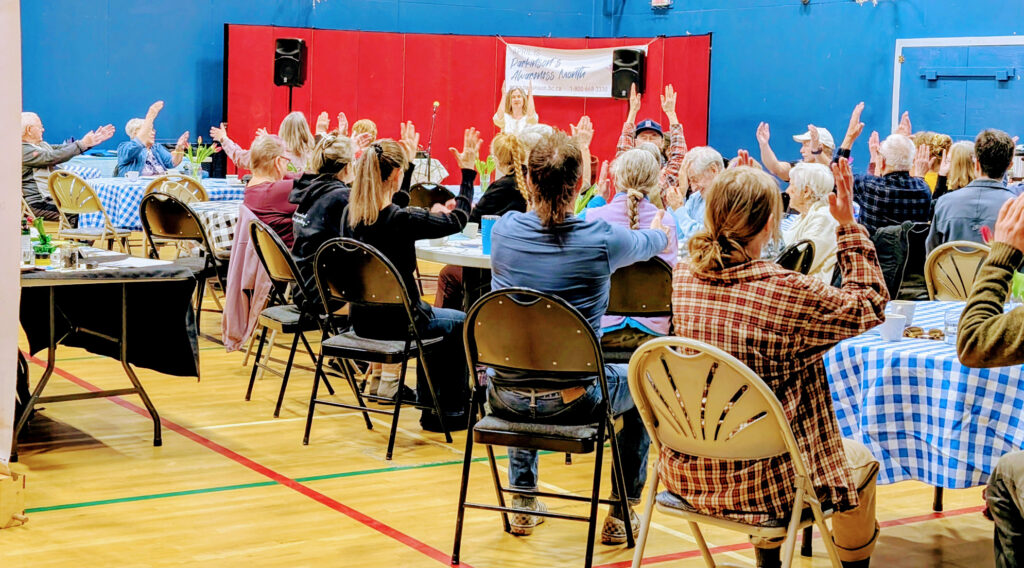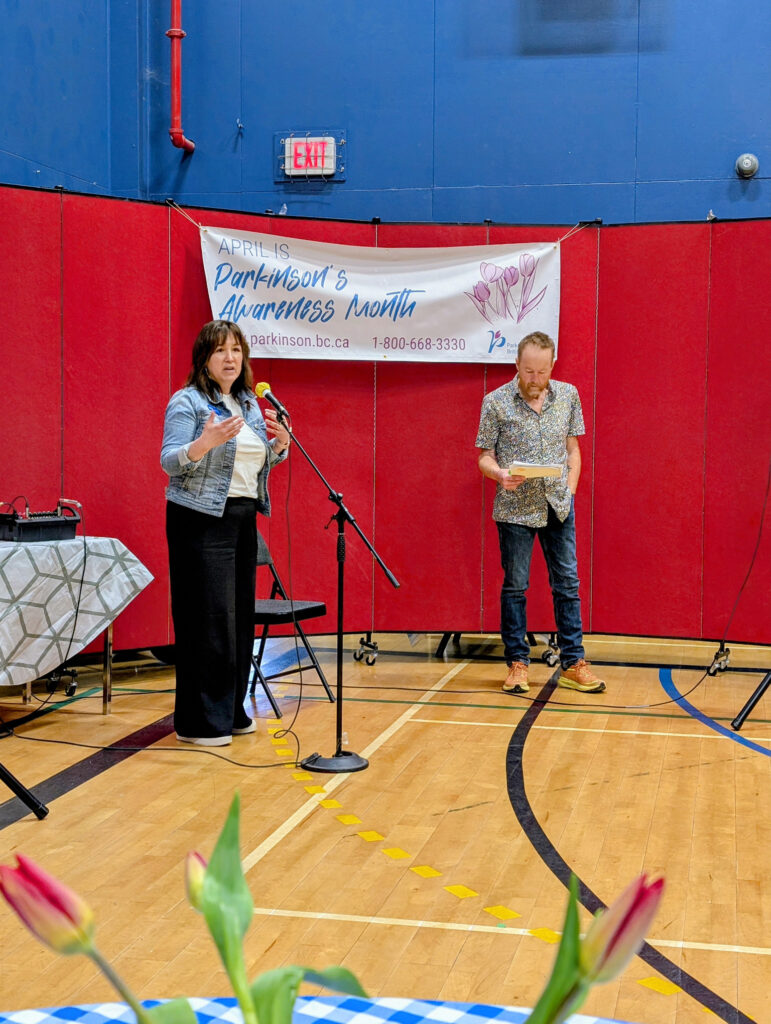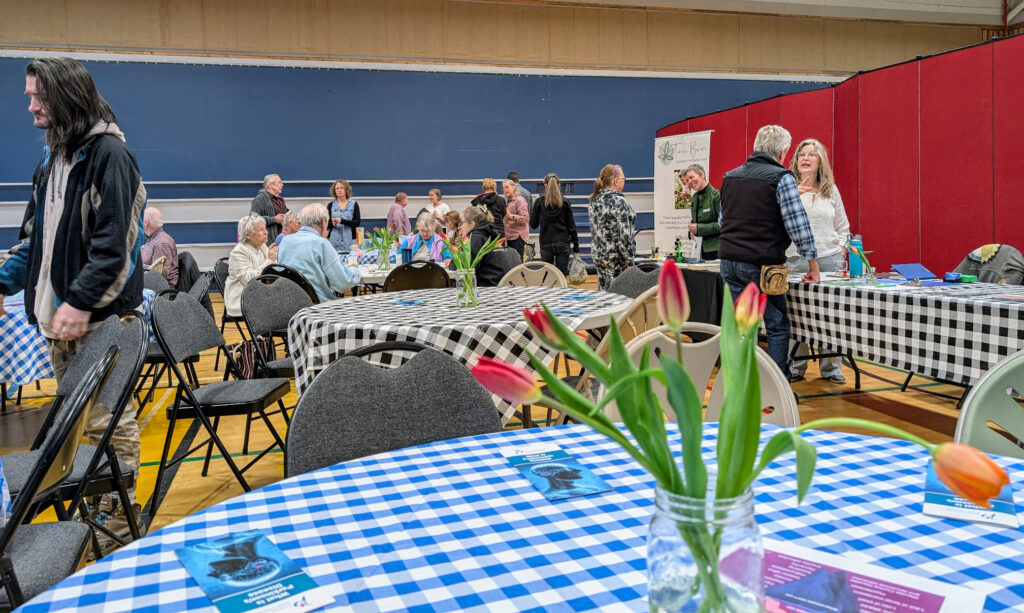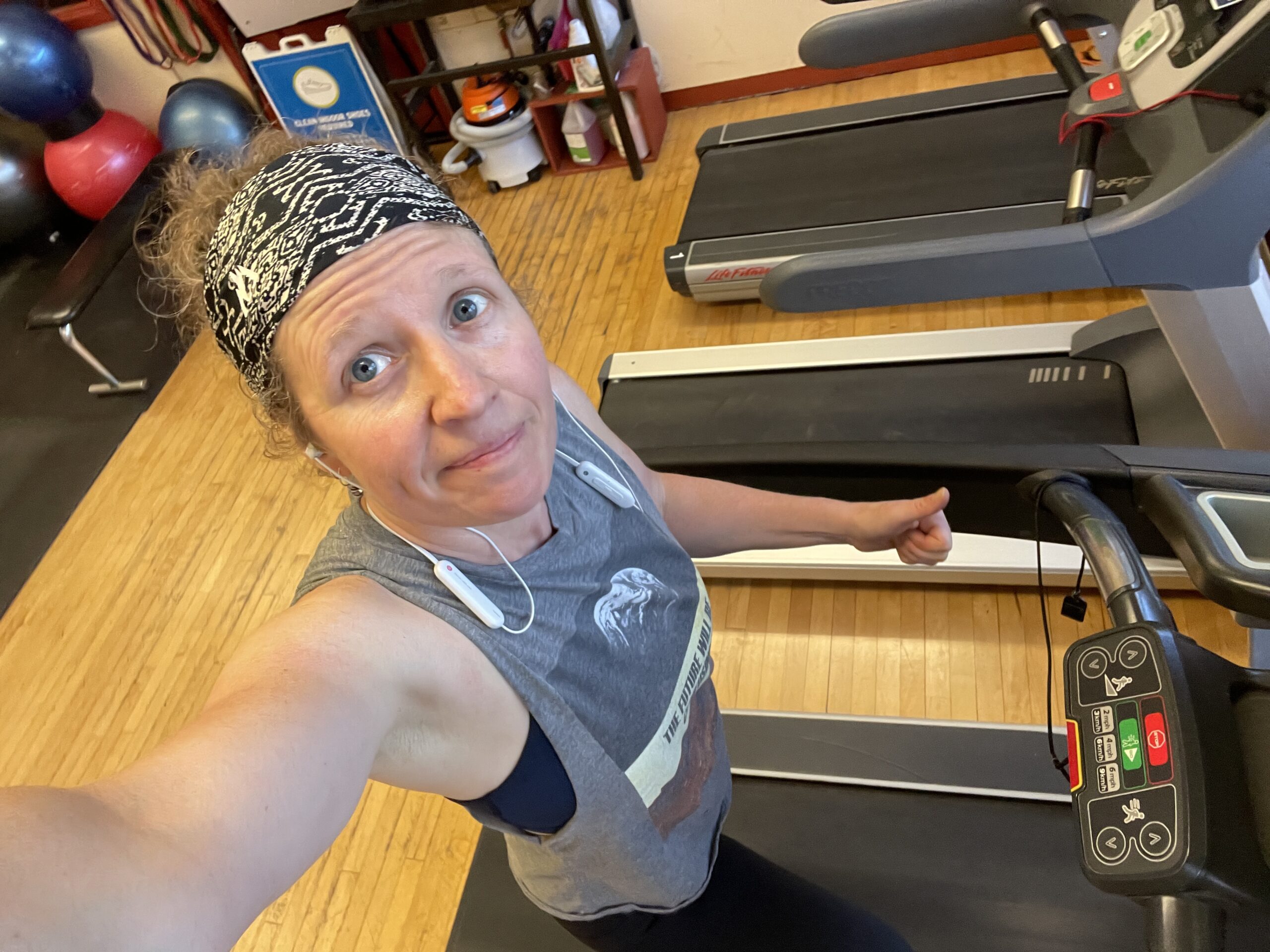The following is an article written by Taylor Caron of Salmo, BC, that was published in local Kootenay newspapers for Parkinson’s Awareness Month in 2025.
At 46, being diagnosed with Young Onset Parkinson’s Disease (YOPD) was not on my map for the year—but then again, who would ever expect that? When the majority of people think of Parkinson’s disease (PD), it isn’t healthy young active people that come to mind. I was quickly tossed into the deep end and forced to confront the truth behind my preconceptions about this degenerative and progressive disease.
April is Parkinson’s Awareness Month, and I wanted to share my experience as a person with YOPD to help people broaden their understanding of this disease.
When you finally get a diagnosis for a symptom (or many symptoms) that have been a part of your daily life for the last two years, it is a relief to find some answers and know it isn’t something worse, but a PD diagnosis is a lot to take.
I’d been dealing with a tremor in my left arm and sometimes my left leg for about two years. Little did I know that some of the other changes happening in my day-to-day life, which I was putting on perimenopause, actually were Parkinson’s—the digestive issues, the frozen shoulder, and lower back pain. Perimenopause hadn’t even started for me yet—it turned out that all of my symptoms could be linked to Parkinson’s.
Initially, I did not want people in my community, my work, or many of my friends to know about my diagnosis. I felt like there would be pity and people would look at me differently, treat me differently. Yet, I was no different than I was just the day before. The most significant shift happening for me was grieving the person I thought I was going to be; traveling and hiking away my 60’s and 70’s. It was this piece of me that I felt slipping away. But, by keeping it inside and trying to hide this major life change, I was struggling being honest with myself or those around me. It felt like I was blowing up a balloon inside a loosely stitched shirt—the seams were starting to pop, and I couldn’t hold it in any longer.
I’ve been seesawing between wanting to duck beneath the covers, hiding from a strange feeling of shame, and wanting to shout it out—to awaken myself and others to the foolishness of assuming tomorrow is guaranteed.
Being vulnerable and open about what is happening to me wasn’t easy before and sure isn’t easy now, but knowing that doing so is my first step in living my life as fully as possible, and that by discussing it I am helping to raise awareness among my friends, family, and community about the many different ways Parkinson’s can look.
One of the first things my neurologist said to me was:
“People do not die from Parkinson’s—they die with it, and they die from the same things most people who live a full life die from.” There are complications from PD that we need to be aware of, but most people with PD live long and full lives.
The internet sure has a lot of information, much of it overwhelming and confusing, but it also has community. I have connected and engaged with many active and genuinely incredible people worldwide, doing everything from marathon running to CrossFit competitions, hiking mountains, and traveling to new places.
The consensus is that regular physical activity, especially moderate to intense exercise, has been shown to slow the decline of motor and cognitive functions in those of us with PD. This is why I think the picture of a person with Parkinson’s that comes to mind should be one of an active person, because if you look further you will see people living with PD who are actively pushing back and never giving up. They may have to modify, but they sure aren’t giving up! They are walking, running, doing yoga or chair yoga, lifting weights or using their body to move, cycling, or sit biking! This community is one of resilience and grit. One that knows it’s important to appreciate that you have a body and mind capable of doing all the amazing things it can!
I want people to understand that when you look up Parkinson’s online, you get that picture of the old guy; hunched over, carrying a cane, shuffling his feet, and shaking. Well, that is not what Parkinson’s looks like for everyone. This degenerative and progressive disease has 40 different symptoms and not everyone with PD has the same ones, and people with Parkinson’s can range in age from as young as 20 (rarely even younger) through their 30s, 40s, and 50s, and beyond. With further digging, learning, and listening you will see plenty of folks with PD living long and fulfilling lives.
When I entered this community, I saw powerful and active people fighting back against the disease. I am inspired and humbled by them all. With this courage, I share part of my story with you today.
Salmo Parkinson’s Awareness Day 2025
A special thank you to Taylor Caron, Todd Wallace, and the support group for their hosting of the first annual Salmo Parkinson’s Awareness Day on Friday, April 11 at the Salmo Youth & Community Centre! The event was a huge success, drawing in over 60 attendees and several organizations. Everyone had the opportunity to connect with friends and learn more about Parkinson’s disease. Thank you to all who attended and supported Parkinson’s Awareness! Below are some photos:





